Great Finland Project
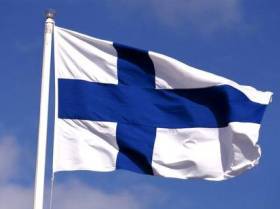 There is information that secret negotiations on the transfer of Helsinki to the Russian territories (Vyborg and Karelia) were under Yeltsin and Khrushchev. It is possible that the “probing of the soil” is going on now.
There is information that secret negotiations on the transfer of Helsinki to the Russian territories (Vyborg and Karelia) were under Yeltsin and Khrushchev. It is possible that the “probing of the soil” is going on now. At least a number of Finnish organizations continue to dream of “Great Finland”, which will include: part of the territory of Norway, Sweden, Estonia, Vyborg, Karelia, the Kola Peninsula, the Arkhangelsk region. The most radical Finns believe that the "Great Suomi" will stretch right up to the Northern Urals.
This idea could be called the “nonsense” of Finnish Nazis, in each country there are such small groups that do not have much influence on the whole society. For example: plans for “Great Georgia”, “Great Albania”, “Great Poland”, etc. are known. But, first, the territorial claims of the Finns already have 200 years history and, secondly, most importantly, they have support at the highest state level.
The collapse of the USSR was the signal for the start of speeches for the return of “originally Finnish lands,” for example, of Karelia. And just to return it to the “Suomi” is half the battle. According to the speaker of the Finnish parliament Riitta Uosukainen, it is necessary to conduct ethnic cleansing on this territory, that is, to evict the current residents. According to the calculations of the organization “ProCarelia” up to 300, thousands of Finns could move to the “liberated lands”. Currently there are about 370 thousands of Russians living there. But in ProCarelia, we are convinced that about 120 thousands of them will immediately move to other areas of the Russian Federation. Basically it will be youth. And about 250 of thousands of Russians will remain in the returned territories - mostly elderly people. However, their presence does not frighten ProCarelia: they will soon retreat into another world.
A detailed report appeared in the Finnish press about the presentation of the book “The Return of Karelia” by a certain Veikko Saxi. In his opinion, the Russian Federation should give Finland the Northern Priladozhie, the Karelian Isthmus and Pechenga, return the money paid as reparations to the USSR, and also compensate for the material damage inflicted on the Finnish side during the hostilities and in the postwar period. Mr. Saksi calculated that the amount of reparations received by the Soviet Union from Finland at the current exchange rate is about 4 billion euros, but the losses for the country's economy caused by these payments reach 30 billion euros. One more billion euros will be demanded from the Russian Federation as compensation for German property and real estate exported from Finnish territory.
The topic of economic calculations related to the annexation of Karelia was continued by the information agency “Suomen Tiôtotomisto”. His report says: “According to the calculations of ProCarelia society, the development of the Karelian Isthmus and the Northern Ladoga area will require 10 years and 30 billion euros. ProCarelia believes that, thanks to the revitalization of the economy, these funds will be depreciated fairly quickly in the form of tax payments, as well as due to the reduction of unemployment in the country. As a result of the merger of Karelia, the oil terminals of the ports of Primorsk (Koivisto) and Vysotsk (Uuras) will be in Finland and acquire the status of foreign enterprises, which is clearly enshrined in Finnish legislation. ”
Journalist Backman in the article “Finland without a mask” writes: “Many Finnish officials expect Russia to disintegrate in the 2015-2025 years, as a result of which vast territories will go to Finland. In the opinion of the Finns, Russia is an economically negligible small parasite state and a developing country, whose greedy leaders plunder all the money coming from abroad. In the opinion of the leading “specialists” of the Ministry of Foreign Affairs of Finland, Russians are lazy, greedy and dodgy liars who are unable to lead or take responsibility. The Finnish Foreign Ministry considers the final collapse of Russia to be the only positive scenario. Finnish media outlets transmit extremely negative information about Russia and Russians. Finns participate in the development of the territories of Karelia, but only at the rate of getting the lost lands back. Finns and their leading politicians would like to carry out ethnic cleansing in Karelia and evict Russians from these territories ”.
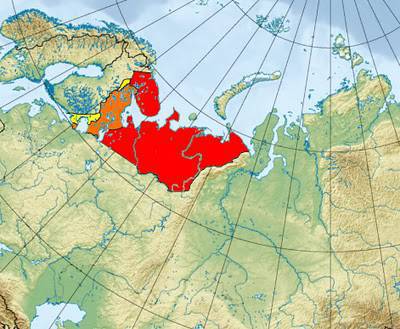
История вопроса
The first to write about “geographical Finland” was the German botanist Wirzen in 1837. He believed that the area of growth of "Finnish plants" is not limited to the Grand Duchy of Finland, but extends to the eastern border of the White Sea. In the 80 of the 19 of the century, his initiative was picked up by Finnish romantic poets, forming a whole trend in his poetry called Karelianism.
After the collapse of the Russian Empire, in which Finnish nationalists, trained in camps in the territory of the German Empire, took part, the idea of “Great Finland” reached the state level. So, 23 February 1918 of the year, while at station Antrea, addressing the troops, the supreme commander-in-chief of the Finnish army, General Gustav Mannerheim, said “the sword oath”, in which he declared that “he would not sheathe the sword ... before the last warrior and bully Lenin did not will be expelled both from Finland and from East Karelia ”. At the end of March, 1918, Finnish White troops entered Northern Karelia. Local government was organized there under the leadership of pro-Finnish supporters of the independence of Karelia. After the end of the civil war in Finland in May 1918, detachments of Finnish "whites" moved to occupy Eastern Karelia and the Kola Peninsula. As a result, the first Soviet-Finnish war began. The First Soviet-Finnish War of 14 of October 1920 ended, when the Tartu Peace Treaty was signed, fixing a number of territorial concessions from Soviet Russia. True, Finnish nationalists got much less than they wanted.
The Finns did not calm down and decided to take advantage of the weakness of Soviet Russia - on November 6, 1921 began the invasion of Finnish troops in Eastern Karelia, and the Second Soviet-Finnish war began. Finland decided to support the revolt of the Eastern Karelians, raised as a result of the active actions of Finnish agitator activists who had been active in Eastern Karelia since the summer of 1921, and also about 500 of the Finnish military, who performed various command functions among the rebels. Units from the Red Finns who emigrated to the RSFSR after the Finnish civil war, in particular, the ski battalion of the Petrograd International Military School (commander A. A. Inno), took part in the rout of the White Finnish troops. The Second Soviet-Finnish War 21 of March 1922 ended with the signing in Moscow of the Agreement between the governments of the RSFSR and Finland on taking measures to ensure the inviolability of the Soviet-Finnish border.
In the 20s, Helsinki annoyed not only Russia, they also turned their attention to the Norwegian province of Finnmark, and demanded that Sweden be granted broad autonomy to Finnish tribes living in the province of Norrbotten. Naturally, the Finns considered their territory and Estonia, inhabited by the people of the Finnish language group.
Help: Finnmark - the northernmost terrain of Norway, the eastern part of which, bordering Russia, does not represent any significant elevations and is filled only with rounded hills and highlands; washed by the stormy waves of the Arctic Ocean. Inside the country, the valleys irrigated by large rivers (especially Tana), covered in summer with rich vegetation, give the impression of more southern countries, but because of the long and harsh winter they do not matter much for farming. This is the largest administrative-territorial unit (county or province) of the Kingdom of Norway. The capital is the city of Vadsø. Finnmark is located entirely above the Arctic Circle, washed by the waters of the Barents Sea. The coastline is indented by fjords, among which Varyazhskiy Bay stands out. The area of the region is 48.618 km2 (more than Denmark). About 36% Finnmark is occupied by the Finmarken highland. Finnmark is bordered by the province of Troms in the west, with Finland in the south and with the Murmansk region of the Russian Federation in the east (the total length of the border with Russia is 219,1 km). Here is the only border crossing between Russia and Norway - Borisoglebsky-Storskog (Storskog). The territory of Finnmark has long been the habitat of the Sami tribes, they paid tribute to Novgorod and Norway, finally the Norwegian region became only at the beginning of the XVIII century.
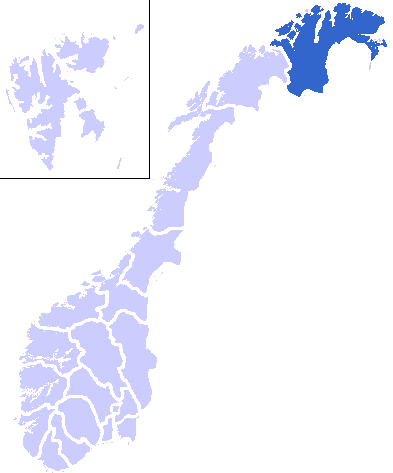
At that time, the project of “great Finland” was supported by all political parties and movements, even leftists: two social democratic policies of the country, Oskar Tokkola and Voinma Vaino, published the first serious study on this subject “Greater Finland in natural borders” in those years.
The defeat of the USSR in two wars - the "Winter War" 1939-1940. and World War II - somewhat cooled the ardor of the Finns. But they decided to come from the other side - “make friends” with Moscow, so that she herself would give them a number of territories. Already in 1945, Juho Kusti Paasikivi, who headed the country's government, hoped that an agreement on joint defense with the Soviet Union and a relationship of trust could facilitate the return of part of the seized territories. A year later, the Finnish government delegation probed in Moscow the ground for possible negotiations on the return of the areas adjacent to the Saimaa Canal. Stalin reacted sharply negatively, and such an initiative was not approved when concluding a peace treaty in Paris.
In the autumn of 1955, the attempt to begin a conversation with the leadership of the USSR about the lost territories again failed. Six months later, events related to the presidential election and the return of the territory of the former Porkkala-Udd military base to Finland by the Soviet Union once again laid the foundation for discussion of the territorial issue. Moscow did not hesitate to condemn the discussion. Urho Kekkonen also did not leave hope to convince the leadership of the USSR to return at least some of the lost lands. As part of a confidential conversation, he offered to exchange Vyborg for the northeastern region of the Finnish Polar Region three times. In 1963, the editor-in-chief of Izvestiya, AI, visited Finland. Adjubei, Khrushchev's son-in-law, was sympathetic to the proposal of the Finnish president to discuss the territorial issue. Their conversation continued in April 1964 of the year in celebration of Khrushchev's 70 anniversary. Kekkonen made it clear that with a positive resolution of this issue, Finland would support the USSR in a dispute over the status of West Berlin. With the removal of Khrushchev from power, the situation has changed - it was necessary to build trust with the new Soviet leadership. The second attempt to use the “German card” was made in the autumn of 1965, when the Finnish president informed through the adviser to the USSR Embassy Stepanov that Finland in exchange for Vyborg was ready to recognize the GDR.
The last time the territorial issue under Kekkonen was raised in the 1967 presidential election campaign of the year. Veikko Vennamo, the presidential candidate, has included in his program a point on the transfer of the eastern border to the Saimaa Canal.
But until 1991, the conversation about expanding Finland’s borders was not openly discussed.
Russian Federation
The organization “ProCarelia” immediately “joined in” and is headed not by lumpens, but by quite respected people: the former chairman of the Karelian Union, retired lieutenant-general Raino Merie, history professor Pentti Virrankoski; a major entrepreneur, a mountain adviser to Yuri Pessi, Professor Heikki A. Reenpää; they are listened to at the level of the Finnish parliament.
In 2009, the organization announced a detailed “Border Reform Reform Plan”. According to him, Finland should withdraw the territory taken under the control of the USSR in 1939 – 1940 and 1941 – 1944 and now being part of the Russian Federation. As part of this “reform,” the project authors propose to return to Finland a part of the border areas of the Republic of Karelia, as well as the Karelian Isthmus with the city of Vyborg in the Leningrad Region and the Pechenga area in the Murmansk Region. According to the authors, changing the border will be beneficial for Russia, which will thus get rid of the “depressed regions”. In addition, "the application of environmental standards adopted in Finland will stop the pollution of Karelia and Ladoga, improve the water supply of St. Petersburg." In defense of this idea, around 200 thousands of signatures have already been collected in Finland.
There is information that negotiations were begun on this issue under Yeltsin, in 2008, the Finnish newspaper Helsingin Sanomat reported that at the end of 1991, the administration of the Russian president allegedly sent unofficial channels to a proposal from Finland about returning Karelia to it. It was also alleged that, by order of the Finnish president, a secret group of experts was established, which estimated the costs of Finland for the possible return of Karelia to 64 billion Finnish marks, or more than 10 billion euros. The group allegedly also calculated that in the long-term, the costs of restoring infrastructure in Karelia would have amounted to 350 billion more marks (about 55 billion euros).
The bottom line: as soon as the Russian Federation weakens even more and the possibility of its collapse appears, Helsinki will not delay to take advantage of this and will capture some Russian territories. Therefore, it is necessary to maintain the capabilities of the Baltic, Northern fleets, as well as those located in the north-west of the army, at a high level in order to immediately stop the encroachments of the Finns.
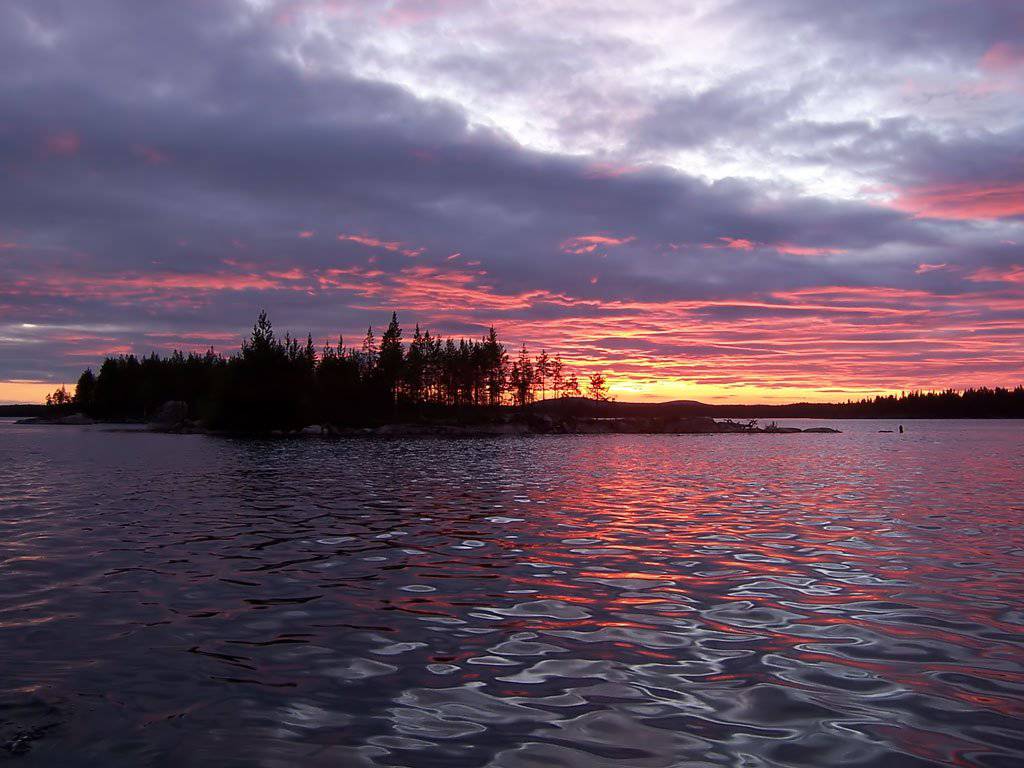
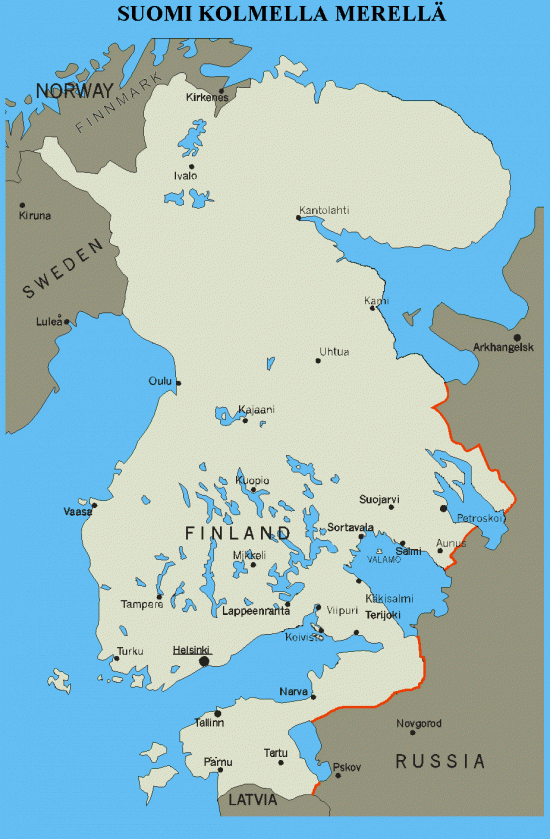
Information